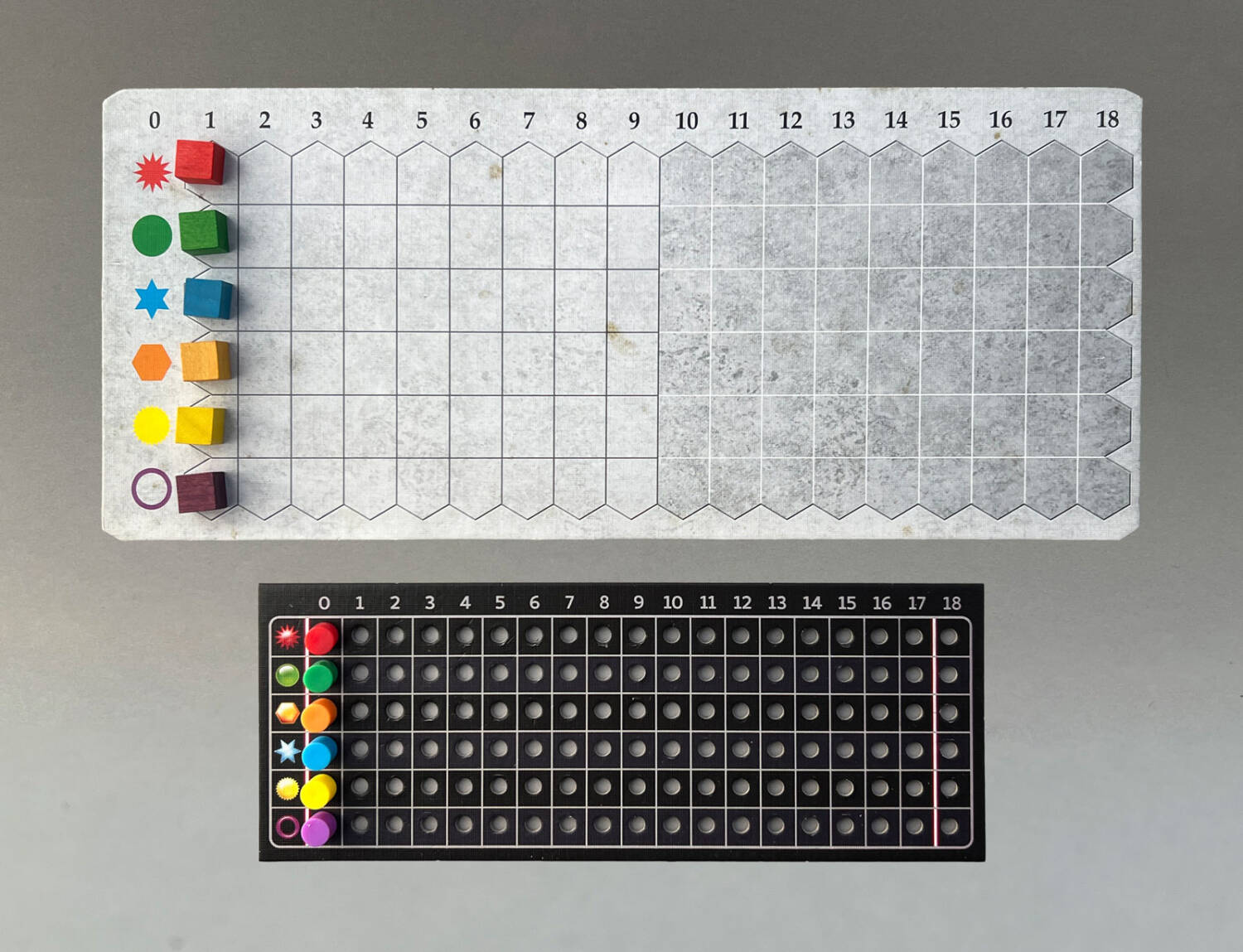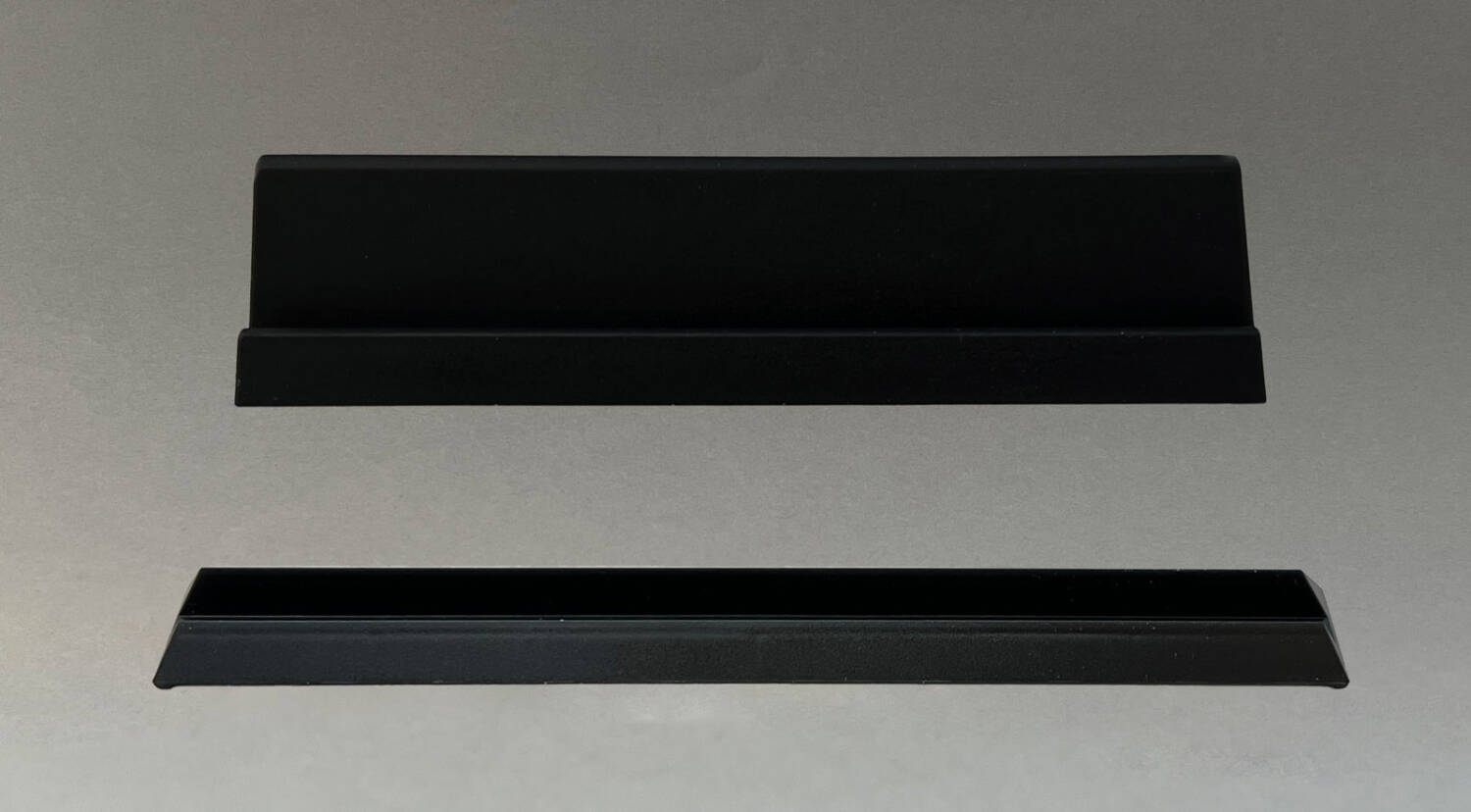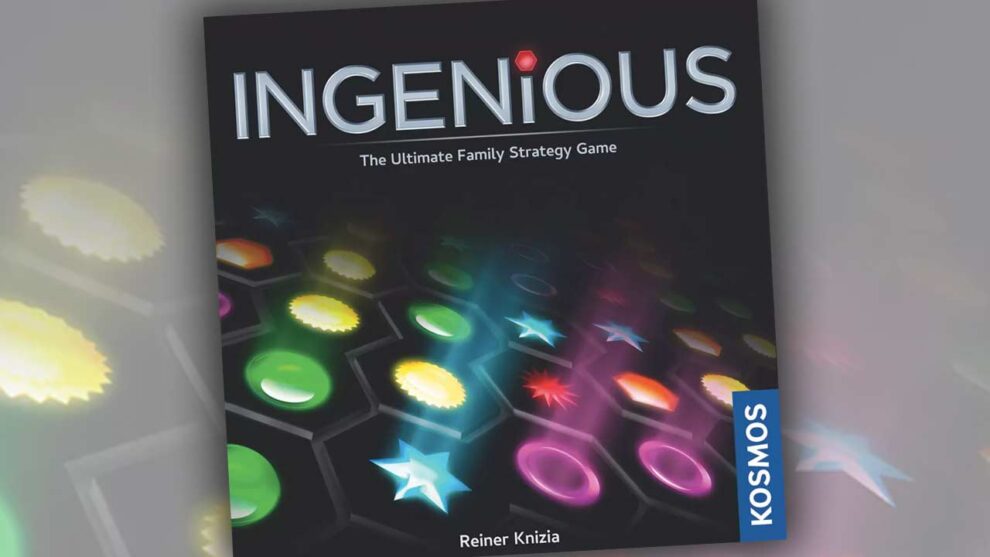Disclosure: Meeple Mountain received a free copy of this product in exchange for an honest, unbiased review. This review is not intended to be an endorsement.
Let’s get the obvious out of the way: I love Ingenious. For me, it is THE gold standard by which I judge all other abstract games that claim to scale beyond two. I was amazed the first time I played it with more than two players—there was no difference in the gameplay or scoring. There is an elegance in the way the game expands so effortlessly to additional players.
I think you can tell how well-loved and how well-played a game is by the condition of the box. Take another look at the photo above, with my original Ingenious box next to the new one. Since 2011, that box has traveled with me to game nights, to-and-from work, and has been loaned out to friends. It has earned every scratch, tear, and rip.
That’s how much I love Ingenious and why I’ve pushed it on anyone who has expressed half an interest in the game. And they’ve all come back as serious believers.

Playing the Game
In my recent review of Horrified: American Monsters, I asked readers of that review to go back to my former colleague Ashley’s review of the original Horrified. In this review of Ingenious’ second edition, I’ll ask you to do much the same. For a full review of the game itself, please take a moment to read through Ashley’s excellent review of the original edition of Ingenious.
I could not put it better myself.
Second Edition Review
For an Ingenious fan like myself, it is impossible to review the latest edition of Ingenious without comparing it to the original edition. After all, with one small exception (discussed below), the two games are identical. So, once I’d removed the thin plastic covering of the second edition, the first thing I did was compare the board and pieces to my original set.
While I’ll spare you the sad sight of my original, torn-at-the-folds original board, I can tell you the boards are the same size. My old board has a white background while the new one is like dark mode on your smartphone: black.
Scoring Boards

The scoring boards to my original US-purchased set are flat, single-layer cardboard. Small, colored wooden cubes are used to track your points per color. Much like my biggest complaint about Terraforming Mars, these boards only need the slightest movement—be it an arm or sleeve or a bump to the table—to see the cubes scatter.
The new edition’s scoring boards are much like the ones in Ashley’s Canadian-purchased version. The surface has been punctured with holes that allow colored pegs to be inserted to keep score. While this is certainly an improvement, the size of the holes and the pegs aren’t quite the same. This makes getting the pegs into and out of the holes a bit of a chore in a tight space.
Tile Holders

Throughout the game, your tiles are going to sit on a rack, waiting their turn to be played out on the game board.
My original game’s tile holders have a raised back. The new version has a minimal back. It’s sufficient to hold the tiles in place, but even without the direct comparison, they look meager.
Tiles

Comparing the two sets of tiles, my older set’s colors are more vibrant, making them easier to see. It helps to have good lighting when playing with the new set of tiles. (The light above our dining room table was barely enough. The red, for instance, blended into the black of the tile a bit too well.)
There was also something different about the new tiles that I couldn’t quite place at first. I knew they were made from a less dense plastic, but there was something else. It wasn’t until I was taking these photos that I realized what it was.

My old set of tiles are inset slightly around each color/shape. This subtle, added dimension to the tiles makes each color/shape stand out more against the hexes.
New Two Player Variant
On the back of the standard scoring board, there is another scoring system. This side has the numbers 9-1 running from each end, meeting at a center zero line. In this separate game, a single set of scoring pegs are placed along the row of zeros. Whenever one player makes a connection of colors/shapes, their score is noted by moving the colored peg(s) closer to their end of the board. When the other player scores that same color/shape, they move the peg that many spaces back towards themselves.

This tug-of-war game ends in the same way the standard game ends, when there are no more spaces left to play a hexomino. The winner is determined by whomever has the most pegs on their side of the zero.
I was excited to try this version, but after just a few turns, I realized it just didn’t work for me. The tug-of-war aspect dominated the tile-laying decisions—if you pull red towards you, I should play red to even it out again. When you get a peg to your back (nine) row, you don’t get any Ingenious Bonus. Instead, you get a cardboard circle with that color/shape on it to remind you that you don’t get to score that color…until your opponent moves it back towards them.
One of the most satisfying moments in a standard game of Ingenious is when you play just the right tile that gives you lots of points. That was missing from this two-player game.
Ingenious is such a well-designed game that the standard two-player game does not need improving upon. Skip this version and just play the regular game.
Overall Thoughts
It’s no surprise that I won’t be replacing my older version of Ingenious with the new edition. It is definitely nice to see it back in print, but this second edition feels cheaply made, with little attention paid to some important gameplay details. It feels to me like a game put out by bean counters focused solely on profit and not by people who appreciate the gaming experience.
If you’ve been looking to get a hold of a copy of Ingenious, this could be your chance. However, you might also want to take a look at used copies of the older edition. Either way, if you like abstract games like I do, it’s hard to come by a better game than Ingenious.
(A note about my rating for this game. For me, Ingenious is a solid 5/5 game. This version of the game, due to the components, is a 2/5. I’m averaging up because I don’t want our rating to be lower than a 4.)











